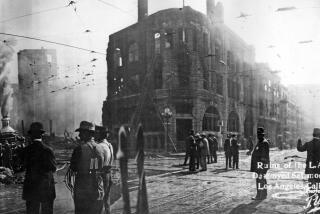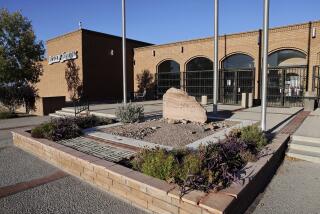Mormon Official Accuses Media of Church ‘Bashing’ in Bomb Reports
- Share via
PROVO, Utah — A top Mormon Church official charged the media, particularly the Los Angeles Times, with Mormon “bashing” in coverage of events surrounding two bombing deaths linked to forged documents obtained by the church.
Dallin H. Oaks, a member of the church’s Council of Twelve and a former Utah Supreme Court justice, said Thursday that the type of criticism leveled at the church since the bombings has not been seen since the faith was ostracized in the 19th Century.
“In the course of this episode, we have seen some of the most sustained and intense LDS Church bashing since the turn of the century,” Oaks told an audience at the Mormon Church-owned Brigham Young University.
Two people were killed Oct. 15, 1985, by separate bombs to cover up fraudulent document dealings by Mark Hofmann. Hofmann’s high-quality forgeries--which passed detection by Mormon Church, FBI and Library of Congress documents experts--dealt with the early history of the church and often tended to undermine official doctrine.
Hofmann pleaded guilty to the deaths and told prosecutors that the killings had to be done to cover up a proposed sale of more fictitious documents.
“While various newspaper writers were accusing the church of suppression of historical documents,” Oaks said, “some of these same papers were actually involved in perpetrating a cover-up of their own.”
Oaks accused The Times of “perpetrating a cover-up” by refusing to disclose until last Saturday that Hofmann was the confidential source for a June, 1985, article describing an allegedly secret church history that differed from the officially recognized history. It was later disclosed that the “secret” history did not exist.
Oaks also said The Times refused to print letters to the editor in 1986 asking whether Hofmann was the source for that story and asking The Times to “print the known truth” about the article.
“We’re certainly not in the business of bashing churches or any other organization. We cover them like we do any other part of the news,” Noel Greenwood, Times deputy managing editor, said, “and I think our coverage in this case has been responsible.”
Greenwood said that the paper had interviewed Hofmann on the alleged church history on the condition that his name be kept confidential, and then kept its word. The Times agreed to the interview on those conditions in part because at the time Hofmann was regarded as reliable by top Mormon officials.
After Hofmann was arrested in the bombings, The Times repeatedly asked Hofmann through his attorney to release the paper from its pledge of confidentiality, to no avail, Greenwood said. Then Hofmann, in interviews with authorities made public July 31, admitted he had fabricated the story of the secret history and had been interviewed by The Times. The Times regarded that as a release from the pledge of confidentiality and the following day published a story confirming that Hofmann was the source for the earlier article.
The Mormon Church has said that 48 documents turned up by Hofmann were bought or donated to the church and later found to be forgeries.
Oaks denied charges that the church withheld information about its dealings with Hofmann and defended leaders who were conned by the expert forger.
“In order to perform their personal ministries, church leaders cannot be suspicious and questioning of each of the hundreds of people they meet each year,” he said.
“It is better for a church leader to be occasionally disappointed than to be constantly suspicious.”
Oaks’ speech ended a daylong symposium at Brigham Young University focusing on the effects Hofmann’s forgeries have had on the church and the business of document collecting.
More to Read
Sign up for Essential California
The most important California stories and recommendations in your inbox every morning.
You may occasionally receive promotional content from the Los Angeles Times.













